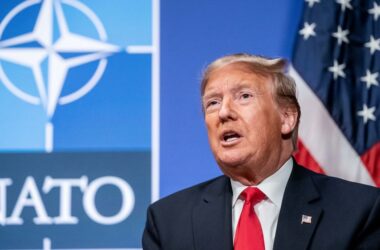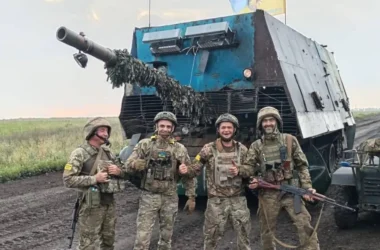The collapse of the Bashar al-Assad regime in late 2024 marked a seismic shift in Syria’s trajectory, ushering in an era of both opportunity and uncertainty. The capture of Damascus by opposition forces and the formation of a transitional government under Ahmed al-Sharaa have set the stage for a potential redefinition of the country after over a decade of civil war. Yet, this transformation is fraught with challenges, from internal divisions to external rivalries. The actors shaping New Syria, the strategic significance of the T4 Airbase, the complex dynamics of Syrian refugees, and the diplomatic contributions of the Antalya Diplomacy Forum (ADF) are pivotal elements in understanding the path ahead. This analysis explores each dimension in depth, weaving together the intricate threads of Syria’s emerging future.
Actors of New Syria: Navigating a Fractured Landscape
New Syria’s political and social framework is being molded by a delicate interplay of internal and external actors. Internally, Ahmed al-Sharaa, also known as Mohammed Abu Rummane, stands at the forefront as the leader of the transitional government. A former commander of Hay’at Tahrir al-Sham (HTS), Sharaa has pivoted to a pragmatic and reformist stance, promising to bridge Syria’s diverse ethnic and religious communities—Arabs, Kurds, Turkmens, Alawites, Druze, and Christians. However, his vision faces significant hurdles. The Turkmen community’s complaints of underrepresentation in the government, Alawite fears of reprisals in a post-Assad era, and the insistence on autonomy by local armed factions pose existential tests to Sharaa’s inclusivity pledge. His ability to craft a constitutional framework that unites these groups will determine whether his leadership fosters stability or sows further division.

The Syrian Democratic Forces (SDF), led by the YPG, constitute another major internal player, governing an autonomous region in northeastern Syria. An agreement with Damascus envisions the YPG disarming and integrating into a new national army, balancing Kurdish aspirations with central authority. Yet, Turkey’s designation of the YPG as a PKK affiliate and the logistical complexities of integration cast doubt on the deal’s viability. Meanwhile, former opposition groups in regions like Aleppo and Idlib retain significant influence over local governance and security. Their alignment with the central government will be a linchpin of Syria’s cohesion.
Externally, Turkey emerges as a dominant force, driven by priorities of border security, refugee repatriation, and advocacy for Turkmen rights. Ankara supports Sharaa’s administration while seeking to limit the SDF’s influence, navigating a delicate balance between intervention and partnership. The United States and the European Union are focused on legitimizing the new government, easing sanctions, and channeling economic aid, though U.S. backing of the SDF and its presence in Syria’s oil fields risks friction with Turkey. Israel, intent on neutralizing Iran’s influence and securing the Golan Heights, pursues aggressive airstrikes that complicate Syria’s stabilization efforts. Russia and Iran, once Assad’s staunchest allies, now grapple with diminished leverage. Russia prioritizes its Tartus and Hmeimim bases, while Iran’s reliance on Hezbollah and proxy militias carries the risk of inflaming sectarian tensions. The interplay of these actors—cooperative at times, adversarial at others—will shape New Syria’s destiny.
T4 Airbase: A Nexus of Strategic Rivalry
Situated near Palmyra in Homs province, the T4 (Tiyas) Airbase is a linchpin of Syria’s strategic geography. Modernized with Soviet assistance during the Cold War, it served as a critical hub for Assad’s air force, a logistical base for Russian operations, and a coordination center for Iran’s Revolutionary Guards and allied militias. Following Assad’s fall in December 2024, T4 has become a flashpoint in the regional power struggle.
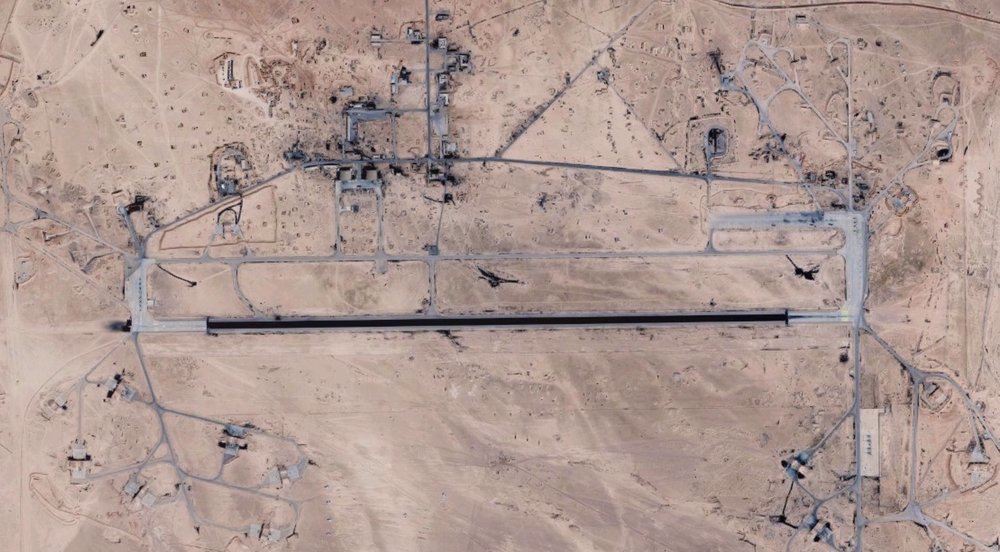
Israel’s relentless airstrikes in the post-regime period have crippled T4’s infrastructure. The main runway, radar systems, aircraft hangars, and air defense assets, including S-200 and S-400 systems, sustained heavy damage, leaving the base largely inoperable. These strikes reflect Israel’s dual aim of erasing Iran’s regional footprint and preventing new actors from establishing control over the facility. For New Syria, T4’s devastation presents both a reconstruction opportunity and a pressing security dilemma.
Turkey has proposed a bold plan to rebuild T4 and transform it into an air defense hub, deploying its indigenously developed Hisar-O, Hisar-RF, and long-range Siper systems, with potential discussions with Russia to activate S-400s. The initiative seeks to secure Syrian airspace until a professional army is established, counter threats like ISIS, and deter Israel’s air operations. However, Israel views Turkish control of T4, given its proximity to the Golan Heights, as a strategic red line. Strikes in April 2025 were widely seen as a warning to Ankara, signaling Tel Aviv’s intent to disrupt these plans.
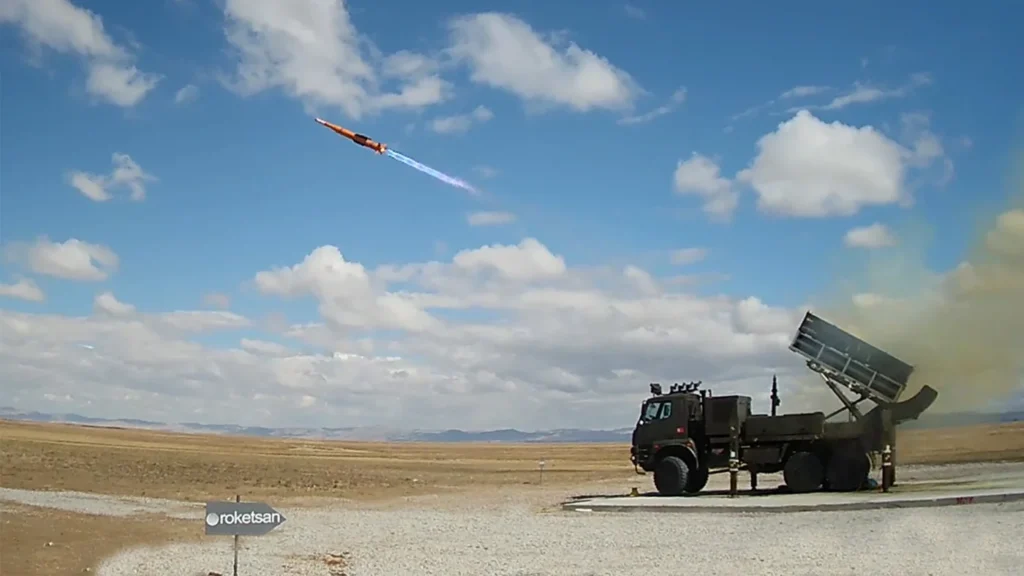
The transitional government’s grip on T4 remains tenuous. While Damascus has expressed openness to collaborating with Turkey on reconstruction, concerns over sovereignty and pressure from external actors muddy the waters. Russia’s return to the base appears unlikely in the near term, and Iran’s physical presence has been all but eliminated. T4’s future hinges on the evolution of Turkey-Israel tensions, Damascus’s ability to navigate external partnerships, and the availability of resources for rebuilding. In the short term, restoring T4’s functionality seems daunting, but its long-term role in Syria’s air defense could be transformative.
The Syrian Refugee Crisis: A Humanitarian and Strategic Challenge
The Syrian refugee crisis, with over 6 million Syrians displaced abroad and millions more internally, looms large over New Syria’s future. Turkey hosts the largest share, with approximately 3.6 million Syrian refugees, making the issue a cornerstone of its Syria policy. The refugee question is not merely humanitarian; it intertwines with security, economic recovery, and social cohesion, both in Syria and its neighbors.
For New Syria, the return of refugees is a double-edged sword. On one hand, repatriation could bolster the workforce, aid reconstruction, and signal stability, strengthening the transitional government’s legitimacy. Sharaa has prioritized creating “safe zones” to facilitate returns, emphasizing infrastructure restoration and security guarantees. On the other hand, mass returns risk overwhelming Syria’s shattered economy and fragile social fabric. Ethnic and sectarian tensions—particularly fears among Alawites and other minorities of retribution—could flare if reintegration is mishandled. The lack of housing, jobs, and basic services further complicates prospects for sustainable returns.
Turkey views refugee repatriation as a strategic imperative, both to alleviate domestic pressures and to stabilize its border with Syria. Ankara has pushed for voluntary, safe, and dignified returns, investing in rebuilding efforts in northern Syria and advocating for international support. However, challenges persist: many refugees fear instability or persecution, and Turkey’s focus on countering the SDF in return zones raises concerns about impartiality. The European Union and other Western actors have pledged humanitarian aid and reconstruction funds to support returns, but their commitments often come with conditions tied to political reforms, slowing progress.
The refugee crisis also has regional ripple effects. Jordan and Lebanon, hosting significant Syrian populations, face similar pressures to facilitate returns while grappling with economic strains. Israel’s security concerns, particularly regarding refugee flows near the Golan Heights, add another layer of complexity. For Sharaa’s government, managing refugee returns will be a litmus test of its governance capacity, requiring coordination with neighbors and international partners to balance humanitarian needs with political realities.
Antalya Diplomacy Forum: A Diplomatic Lifeline for New Syria
The fourth Antalya Diplomacy Forum (ADF), held in March 2025 under the theme “Embracing Diplomacy in a Divided World,” provided a vital platform for New Syria to engage with the global community. Ahmed al-Sharaa’s participation marked his first major international appearance, amplifying the transitional government’s legitimacy and its quest for reconstruction support.
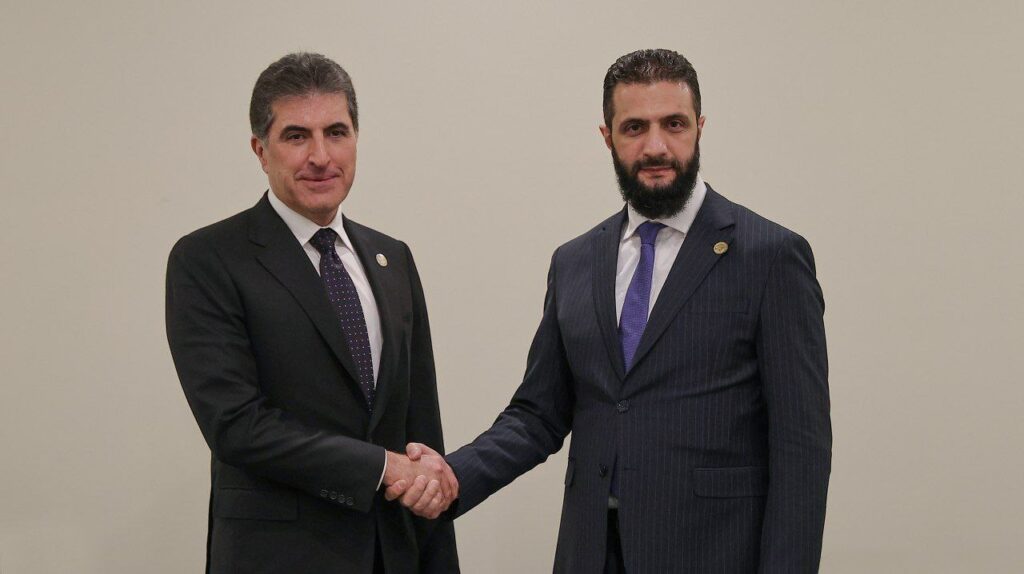
Sharaa’s bilateral meetings with leaders from Azerbaijan, Qatar, Libya, and Kosovo opened diplomatic channels, countering the risk of Syria’s isolation. Talks with Azerbaijan explored energy infrastructure, oil and gas projects, and security cooperation, culminating in a proposed trilateral framework with Turkey and Syria—a potential catalyst for regional integration. Libya agreed to establish a joint commission to bolster economic and political ties, while Qatar committed to humanitarian aid and infrastructure investments, offering a lifeline for Syria’s recovery. These engagements underscored Sharaa’s intent to position Syria as a cooperative partner on the global stage.
Turkey’s hosting of the ADF cemented its role as a mediator in Syria’s normalization process. Under Foreign Minister Hakan Fidan’s stewardship, the forum highlighted Ankara’s commitment to Syria’s stability. Sharaa’s alignment with Turkey on refugee repatriation, border security, and Turkmen representation reinforced bilateral trust. His public gratitude to President Erdoğan underscored Turkey’s pivotal role, particularly in advocating for safe refugee returns. Turkey’s proposed model for “safe zones” gained traction at the ADF, laying the groundwork for coordinated repatriation efforts with international backing.
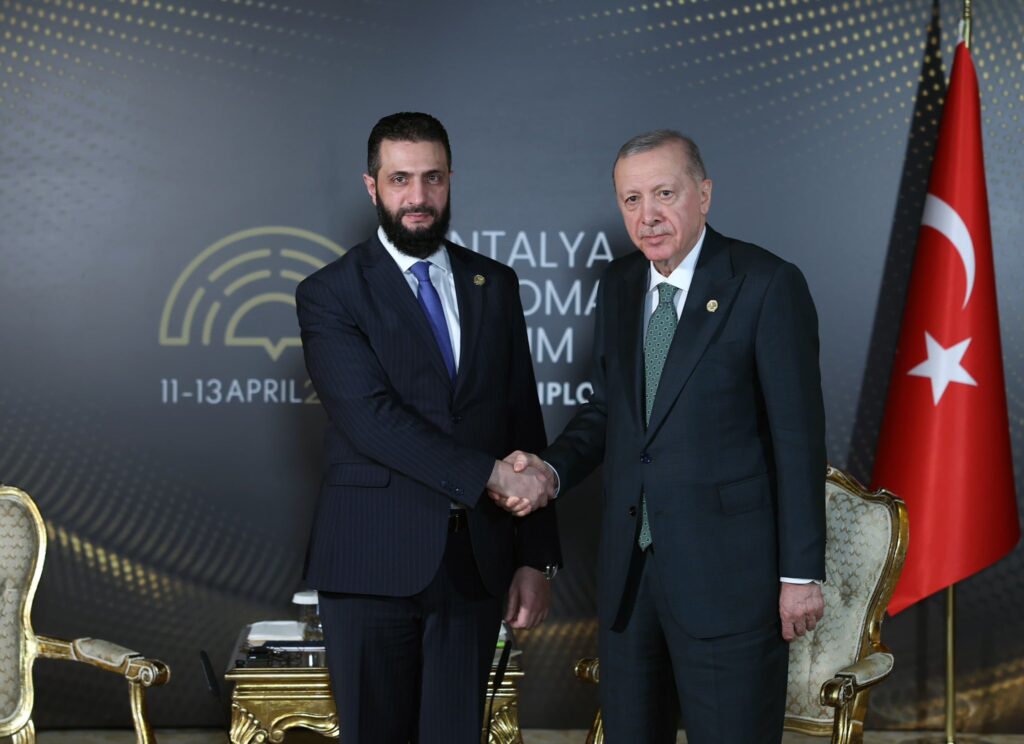
The ADF also allowed Syria to address regional and global threats. Sharaa’s condemnation of Israel’s violations in the Golan Heights and airstrikes in Syria, coupled with his assertion that “Syria belongs to Syrians,” signaled a commitment to an independent foreign policy. His call for collective action against terrorist groups like ISIS positioned Syria as a constructive security actor. On refugees, Sharaa emphasized the need for global support to rebuild infrastructure, aligning with Turkey’s push for safe returns and appealing to Western donors for funding.
Economically, the ADF amplified Syria’s plea for reconstruction aid. While pledges from Azerbaijan, Qatar, and others were promising, their impact depends on Syria’s ability to implement reforms and the willingness of external actors to deliver. The forum accelerated Syria’s reintegration into the global system while reinforcing Turkey’s regional leadership.
Overall Assessment: A High-Stakes Transformation
New Syria stands at a crossroads, with the potential for a rebirth grounded in justice, inclusivity, and stability, yet shadowed by formidable risks. Ahmed al-Sharaa’s leadership could chart a path to success if it bridges internal divides and leverages external support, but failure risks plunging the country into renewed chaos. Internally, ethnic and sectarian fault lines—Turkmens’ marginalization, Alawite anxieties, Kurdish ambitions—alongside economic collapse and entrenched criminal networks like the captagon trade, threaten cohesion. The refugee crisis adds another layer of complexity, demanding delicate management to prevent social unrest while harnessing returnees’ potential for rebuilding.
Externally, Turkey’s security-driven engagement, U.S. economic support, and Israel’s aggressive posturing define the strategic landscape. The T4 Airbase encapsulates these tensions: Turkey’s vision of a fortified hub clashes with Israel’s determination to maintain air dominance, while Damascus struggles to assert control. Rebuilding T4 is as much a test of sovereignty as it is a logistical challenge, with implications for Syria’s security architecture.
The refugee question, intertwined with these dynamics, tests New Syria’s resilience and its neighbors’ patience. Turkey’s push for repatriation, backed by ADF discussions, aligns with Sharaa’s stabilization goals but faces hurdles in implementation. Safe returns require not just security but also economic opportunity and social reconciliation—goals that remain elusive amid Syria’s fragility.
The Antalya Diplomacy Forum offered a critical lifeline, granting Sharaa’s government legitimacy and forging partnerships for reconstruction and refugee support. Turkey’s mediation amplified these gains, but their longevity hinges on Syria’s internal progress and external actors’ commitment.
Conclusion: Navigating Hope and Peril
New Syria embodies a paradox of hope and peril. Ahmed al-Sharaa’s leadership, Turkey’s strategic partnership, the promise of refugee returns, and platforms like the ADF provide a foundation for renewal. Yet, regional rivalries at T4, internal divisions, economic ruin, and the delicate task of repatriation underscore the fragility of this moment. Turkey’s role as a mediator and security guarantor is pivotal, but risks backfiring if it alienates groups like the Turkmens or appears overly dominant. For Sharaa, delivering inclusive governance and a balanced foreign policy is paramount. If New Syria can harness returning refugees as a force for rebuilding while navigating internal and external pressures, a brighter future is possible. Without this, the ghosts of past conflicts may resurface in new forms. Cautious optimism remains the most prudent lens through which to view New Syria’s unfolding story.




